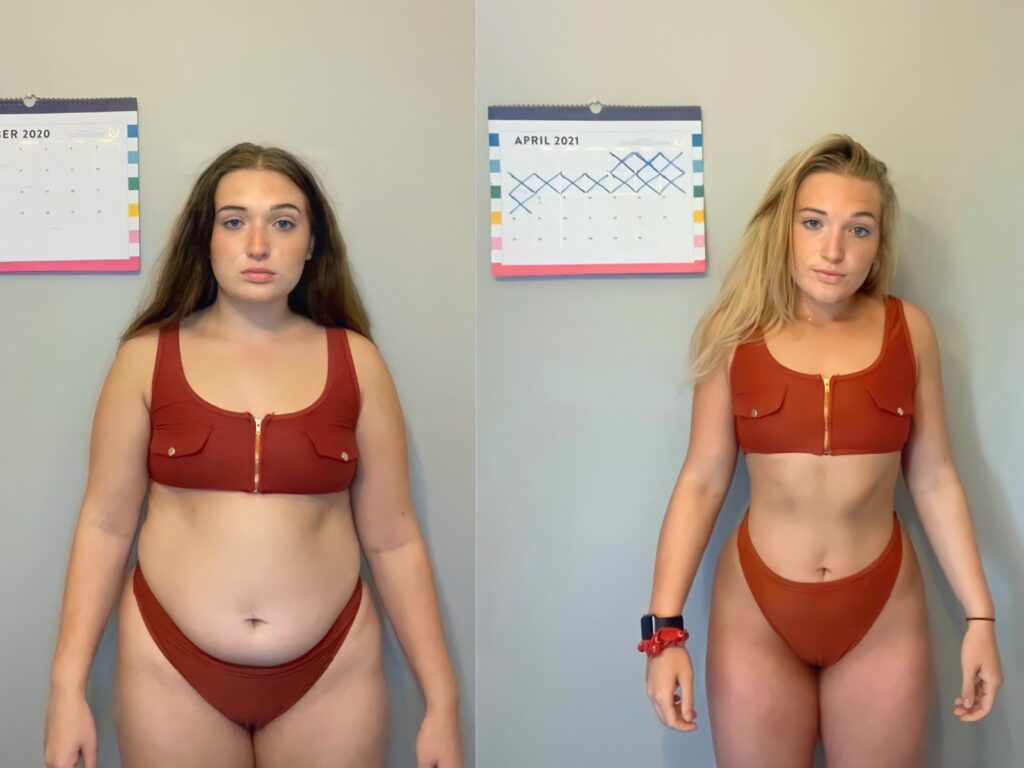
Maintaining a healthy weight is not just about physical appearance it directly impacts energy, disease prevention, and overall well-being. Sustainable weight management focuses on long-term, balanced habits that nourish the body and mind rather than restrictive diets or temporary fixes.
Key Takeaways
- Sustainable weight loss requires a calorie deficit created through balanced nutrition and regular exercise.
- Consistency, not speed, determines long-term success aim for 0.5–1 kg weight loss per week.
- Protein-rich foods, fiber, hydration, and mindful eating are essential for appetite control and metabolism.
- Quality sleep and stress management are equally important for hormone balance and fat regulation.
- Fad diets, processed foods, and skipping meals hinder progress and harm long-term health.
- Tracking progress and maintaining patience reinforce lasting behavioral changes for lifelong results.
Why Your Approach Matters for Weight Loss
Your approach to weight loss is crucial because it determines whether your results will be temporary or sustainable. While fad diets may seem appealing with their promise of rapid results, they often involve extreme restrictions that are difficult to maintain and can lead to nutrient deficiencies, muscle loss, and eventual weight regain. A healthier, long-term strategy focuses on creating a moderate calorie deficit by combining nutritious, balanced eating with regular physical activity.
This method fuels your body with essential nutrients, preserves lean muscle mass, supports a healthy metabolism, and lowers the risk of chronic diseases like diabetes and heart disease. By making gradual, realistic changes rather than seeking quick fixes, you build habits that promote consistent progress and protect your overall health, avoiding the harmful cycle of yo-yo dieting.
Understanding Healthy Weight Loss
A realistic goal is to lose 0.5–1 kg (1–2 lbs) per week. This pace supports fat loss rather than muscle loss and is easier to maintain. Healthy weight loss plans typically combine:
- A nutrient-rich, calorie-controlled diet that provides essential vitamins and minerals while controlling calorie intake to avoid nutritional deficiencies.
- Regular physical activity that not only burns calories but also builds muscle and improves cardiovascular health.
- Good sleep and stress management to regulate hormones related to hunger and fat storage.
- Consistency over time, recognizing that weight loss is a gradual process that requires steady lifestyle changes rather than drastic or temporary diets.
The 10 Tips to Lose Weight
Here are 10 practical and science-backed tips to help you lose weight, improve your health, and maintain your results over the long term:
1. Eat More Whole, Unprocessed Foods
Whole foods like vegetables, fruits, lean proteins, whole grains, and healthy fats provide essential nutrients, keep you fuller for longer, and help control calorie intake. They are less calorie-dense and packed with fiber which aids digestion and satiety.
- Focus on fiber-rich vegetables and fruits to help reduce hunger and improve gut health.
- Avoid refined sugars and highly processed snacks which cause blood sugar spikes and often contain empty calories.
- Fill half your plate with vegetables at each meal to boost nutrient intake without extra calories.
2. Practice Portion Control
Even healthy foods can contribute to weight gain if eaten in large quantities. Understanding portion sizes helps manage calorie intake without feeling deprived.
- Use smaller plates and bowls to naturally reduce serving sizes.
- Read food labels for serving sizes to avoid accidental overeating.
- Listen to your body’s hunger and fullness cues to eat mindfully rather than out of habit or emotion.
3. Include Protein at Every Meal
Protein boosts satiety, helps build lean muscle, supports fat loss, and helps preserve muscle mass during calorie deficits.
- Good sources include chicken, fish, tofu, eggs, Greek yogurt, and beans.
- Aim for 20–30g of protein per meal to maximize muscle maintenance and fullness.
- Include both animal and plant-based proteins for variety and nutritional balance.
4. Stay Hydrated
Drinking enough water regulates appetite, improves metabolism, and prevents overeating by sometimes reducing false hunger signals.
- Aim for 6 to 8 glasses per day as a general goal; individual needs vary.
- Drink a glass of water before meals to prevent overeating.
- Replace sugary drinks with water or herbal tea to cut unnecessary calories and sugar intake.
5. Move More Every Day
Exercise plays a crucial role in burning calories, improving cardiovascular fitness, building muscle, and enhancing mood and energy levels.
- Include both cardio (walking, cycling) and strength training exercises to burn fat and maintain muscle.
- Aim for at least 150 minutes of moderate activity weekly, as recommended by health authorities.
- Incorporate more movement in daily routines by taking stairs, walking during breaks, or doing home workouts.
6. Get Enough Sleep
Sleep deprivation increases hunger hormones (ghrelin) and decreases satiety hormones (leptin), making weight loss harder.
- Aim for 7–9 hours of quality sleep per night for optimal hormone regulation.
- Keep a regular sleep schedule to establish consistent circadian rhythms.
- Limit screen time before bed to improve sleep quality by reducing blue light exposure.
7. Manage Stress
Chronic stress raises cortisol levels, which can increase fat accumulation in the abdomen and trigger emotional eating.
- Practice relaxation techniques like deep breathing, meditation, or yoga to reduce stress.
- Spend time outdoors or with loved ones to boost mood and reduce anxiety.
- Keep a stress journal to identify and manage personal stressors effectively.
8. Plan and Prepare Meals
Meal planning minimizes impulsive, unhealthy food choices and helps control ingredients, portions, and calories.
- Cook at home more often to have better control over meal components and cooking methods.
- Prepare healthy snacks ahead of time to avoid reaching for processed options.
- Keep nutritious staples stocked so you always have healthy options available.
9. Track Your Progress
Monitoring food intake, physical activity, and body changes increases accountability and motivation.
- Keep a food diary or use a tracking app to understand eating patterns.
- Weigh yourself weekly, not daily, to avoid focus on normal day-to-day fluctuations.
- Track measurements and how clothes fit as additional progress markers beyond the scale.
10. Be Patient and Consistent
Weight loss is a gradual process. Focus on progress, not perfection, to build a sustainable lifestyle.
- Celebrate small wins to stay motivated.
- Expect occasional setbacks and get back on track quickly without guilt.
- Think of weight loss as a lifestyle change, not a temporary diet.
Foods to Limit or Avoid for Weight Loss
When aiming for weight loss, it’s important to be mindful of certain foods that can stall progress. Limiting or avoiding these foods, while choosing healthier alternatives, can support your goals and overall well-being.

Here’s a table summarizing foods to limit or avoid, reasons why they can hinder weight loss, and healthier alternatives to consider:
| Foods to Limit or Avoid | Why They Can Stall Progress | Healthier Alternatives |
| Sugary drinks & sodas | High in empty calories; cause blood sugar spikes | Water, sparkling water, herbal teas |
| Fried & fast foods | High in unhealthy fats and calories | Grilled, baked, or steamed meals |
| Refined carbs (white bread, pasta) | Cause blood sugar spikes; low in fiber | Whole grains, quinoa, brown rice |
| Processed snacks (chips, sweets) | Low in nutrients, high in calories | Fresh fruits, nuts, yogurt |
FAQs
What is the best exercise for weight loss?
A combination of cardio exercises, which help burn calories, and strength training, which builds muscle and increases metabolism, is most effective for fat loss and muscle maintenance.
Can I lose weight without exercise?
Yes, it is possible by creating a calorie deficit through diet alone. However, combining healthy eating with physical activity yields better health benefits and more sustainable, long-term weight control.
How many calories should I eat to lose weight?
Calorie needs vary depending on factors like age, gender, activity level, and weight goals. Generally, reducing daily intake by 500–750 calories from your maintenance level leads to a safe weight loss of about 0.5–1 kg per week.
Is intermittent fasting effective?
For some people, intermittent fasting can help reduce calorie intake and improve insulin sensitivity. Success depends on maintaining healthy food choices and not overeating during eating windows.
Do weight loss supplements work?
Most weight loss supplements have limited effectiveness and are not a substitute for a healthy diet and regular exercise. Focus on whole foods and lifestyle habits first for sustainable results.
How soon will I see results?
With consistent healthy habits, you may notice changes in 2–4 weeks, but lasting and significant weight loss typically takes several months.
Conclusion
Successful weight loss is best achieved by 10 Tips to Lose Weight which is focused on healthy, sustainable habits rather than relying on quick fixes. Prioritize nutrient-dense whole foods, practice portion control, and engage in regular physical activity to support your goals. Equally important are getting sufficient, quality sleep and effectively managing stress, as both play a role in metabolism and cravings.
Patience and consistency are essential lasting results take time. Remember, weight loss is not just about reaching a certain number on the scale, but about improving your energy, confidence, and overall quality of life. By making balanced, mindful choices every day, you can achieve and maintain long-term health and well-being.
References
- Centers for Disease Control and Prevention (CDC). Healthy Weight – Losing Weight. Retrieved from: https://www.cdc.gov/healthy-weight-growth/losing-weight/index.html
- Mayo Clinic. Weight loss: 6 strategies for success. Retrieved from: https://www.mayoclinic.org/healthy-lifestyle/weight-loss/in-depth/weight-loss/art-20048466
- Harvard T.H. Chan School of Public Health. The Nutrition Source – Healthy Weight. Retrieved from: https://www.hsph.harvard.edu/nutritionsource/healthy-weight/
- National Health Service (NHS). How to lose weight. Retrieved from: https://www.nhs.uk/live-well/healthy-weight/how-to-diet/
- American Heart Association. Losing Weight. Retrieved from: https://www.heart.org/en/healthy-living/healthy-eating/losing-weight
Dr. Priya Mehta, MD, MPH, is an obesity medicine specialist with more than 10 years of experience in clinical nutrition, metabolic health, and lifestyle medicine. She earned her medical degree from Stanford University and an MPH in Nutrition Policy from Harvard T.H. Chan School of Public Health. Dr. Mehta’s practice emphasizes evidence-based weight management through behavioral science, medication therapy, and nutrition education. She has contributed to national obesity treatment guidelines and serves as a consultant for public health weight-loss initiatives.


